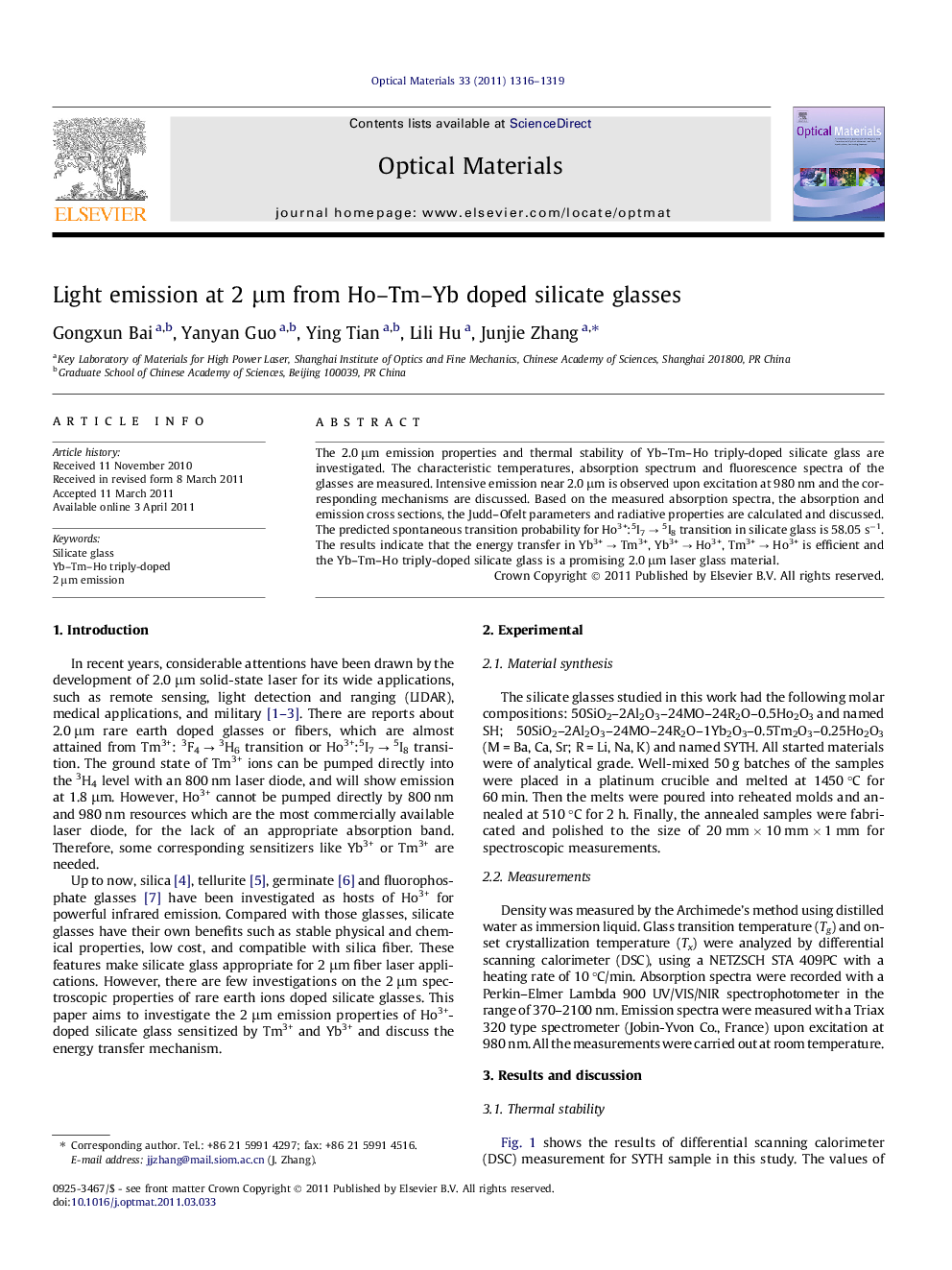| Article ID | Journal | Published Year | Pages | File Type |
|---|---|---|---|---|
| 1494999 | Optical Materials | 2011 | 4 Pages |
The 2.0 μm emission properties and thermal stability of Yb–Tm–Ho triply-doped silicate glass are investigated. The characteristic temperatures, absorption spectrum and fluorescence spectra of the glasses are measured. Intensive emission near 2.0 μm is observed upon excitation at 980 nm and the corresponding mechanisms are discussed. Based on the measured absorption spectra, the absorption and emission cross sections, the Judd–Ofelt parameters and radiative properties are calculated and discussed. The predicted spontaneous transition probability for Ho3+:5I7 → 5I8 transition in silicate glass is 58.05 s−1. The results indicate that the energy transfer in Yb3+ → Tm3+, Yb3+ → Ho3+, Tm3+ → Ho3+ is efficient and the Yb–Tm–Ho triply-doped silicate glass is a promising 2.0 μm laser glass material.
► In our work, a silicate glass is selected as doping matrix, the glass express relatively high glass transition temperature (Tg=530°C), good thermal stability. ► Intensive emission near 2 μm is observed upon excitation at 980 nm. ► The predicted spontaneous transition probability for Ho3+:5I7 → 5I8 transition in silicate glass is 58.05 s−1. ► Based on the measured absorption spectra, energy transfer mechanism is dicussed in this work. ► The present results indicate that the Yb–Tm–Ho triply-doped silicate glass is a promising 2.0 μm laser glass material.
